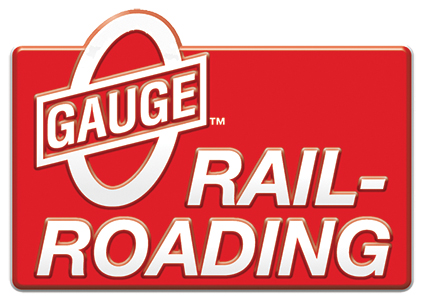Originally Posted by Jim 1939:
Todd was there, he knows. One of his favorite projects was the remake of the Wabash F3 set.
He used his own PW set as a guide for the new one. He told me they found the original die for the caboose.
Jim
Hey, King James! Thanks for the shout-out, and I hope all is well. I'm sure we'll cross paths in the coming months. That 6-31711 1563W PWC Wabash F-3 set was one of my favorites, and I was quite proud with how it turned-out. I actually borrowed an original set from a friend to use as guidance, and it represented a turning-point in how the PWC items were developed in the early 2000's. There are lots of stories associated with that one, and yes, we uncovered the only remaining unmodified, original caboose tool during the summer of 2002 which I promptly scheduled for use in the Wabash Set. I think Ed Boyle did a Collector's Gallery on the reissue when it hit the marketplace, and I recall filling him on some of the details.
Originally Posted by ADCX Rob:
Which caboose?
Originally Posted by Jim 1939:
The brown SP type caboose that's in the Wabash freight set.
Originally Posted by ADCX Rob:
Haven't those dies been in continuous use since 1948, with many revisions & retooling?
Yes and no. The SP-caboose story still hasn't been fully documented, but here's the short version (with a warning that I'm doing this from memory).
There are THREE individual SP-caboose tools, which I believe were created in 1947, 1949 and 1952, respectively. This was likely done for capacity reasons, but it's possible there's more to it that we haven't discovered yet. To make matters even more complicated, these tools contained multiple cavities, yielding even more variations of the 2357 diework. (I've seen some postwar guides attempt to put caboose variations in chronological order, but that's next to impossible as a caboose body could come from any one of these tools and cavities.)
In 1970, MPC heavily reworked two of the three tools, totalling four cavities. These changes include removing the end platforms from the molds, and allowing the caboose bodies to accept a new plastic frame and end rails. This modified caboose proved to be the workhorse of the 1970's, 1980's and early 1990's before a brand-new pseudo-SP, two-window style was released in 1994, largely due to the poor condition of the original tools. The vintage SP tooling was used again in the 1997-1998 time period, but because it had deteriorated so badly, one tool was shipped to China for refurbishment and production. (Lionel's total production shift offshore wouldn't occur for another 3-4 years.) I think I've said this before, but the folks at SandaKan did a wonderful job coaxing life out of old tooling.
In the early 2000's, there were two large "pushes" to ship tooling to China as part of the relocation efforts. The operations group handled most of what was immediately needed in the near term, and then I was given a two inch-thick list of Lionel's tooling to figure-out what else to send offshore, as part of the second wave of things that could be needed in the coming years. I literally took several days, going over the list line-by-line. I discovered MANY interesting things, but one of which was a caboose tool -- 002357T003A, I believe -- which didn't have any "parents" listed. This meant that it had never been assigned to any projects in Lionel's MRP II system (Manufacturing Resource Planning) that dated back to 1974 or so. I was intrigued, so I asked a project manager to have a bunch of tooling pulled for me in the summer of 2002, one of which was the 2357. After using a crane to remove the top half of the mold, I saw an unmodified 2357 cavity staring back at me. Bingo! Particularly interesting was the fact it was the cavity that failed back in the late 1940's, and required an extra "board" be added to the roofwalk before a more permanent repair could be made. It was clear where the top cavity of the tool had been inserted to perform the repair.
From there, it was easy to recreate the "deluxe" version of the 2357 caboose. We found the original stamped-metal frame tool as well as the prewar tool that produced the die-cast metal stack. The only thing we couldn't locate were the stamping tools to create the underframe's toolbox, but in the scheme of things, they were reasonably inexpensive to reproduce. I know that the Wabash F-3 set originally came with a 6357 without the toolbox underneath, but there was no way I was going to miss a prime opportunity to reintroduce the deluxe SP-caboose, which is why that set's 6357 has the toolbox.
Sorry if I've bored anyone to death, but that's the story of the rebirth of the original 2357 SP-caboose.
Regards,
Todd


